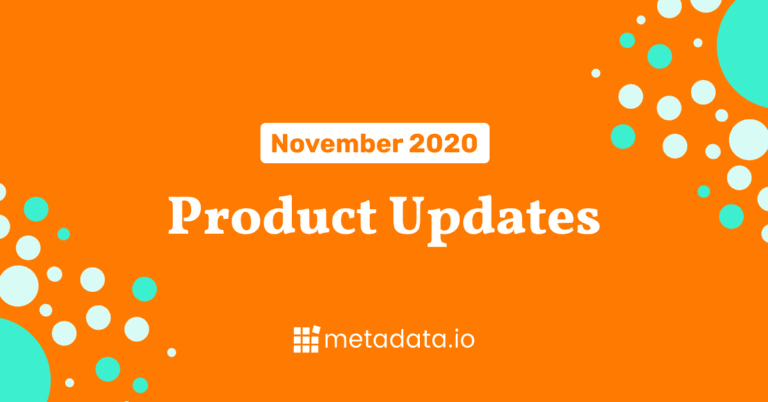Modern Marketer Guide: How to Radically Dial In Your B2B Audience Targeting
Audience targeting has always been a B2B marketer’s kryptonite. Complex buying processes with multiple decision-makers, long sales cycles, and the limitations of native ad channels all play a part.
I get it. Targeting is hard, and it won’t get easier when Google phases out third-party cookies next year, and companies (like Apple) put restrictions on the data you can use to target people. But citing these factors as the reason why you’re not reaching the right B2B audience? That doesn’t cut it in my book. Not even close.
The reason so many marketers miss the mark—and their intended audience—is because they forget they’re selling to real people with diverse needs, feelings, beliefs, pain points, and expectations.
Here’s a call to all B2B marketers: Targeting doesn’t have to be a nightmare. You just need to wake up and realize that there’s an actual person on the other side of the screen.
The “old way” of B2B audience targeting
When I think of old-school targeting and B2B marketing, a few words come to mind: passive, forgettable, and blah. (That last one is a real word, right?)
Ever since the cookie replaced irrelevant pop up ads, B2B marketers have relied on demographic data—think company size, industry type, job title, and location—to hone in on their audience.
From there, marketers would apply their personas to the traditional lead generation model. They’d sit at the bottom of the funnel, using a proverbial lasso to pull prospects down the funnel—and they’d do it with one-size-fits-all ads that didn’t speak to anyone’s unique needs. This is why everyone’s always said, “B2B marketing is boring.”
I don’t blame marketers for this old-school mindset and lackluster approach. Persona-based targeting strategies and watered-down messages were the norm, but they’ve run their course. They’re too broad, imprecise, and forgettable. Plus, they overlook the nuances of companies and the complex decision-making trees that live within them.
That’s why it’s time to embrace the new way of B2B marketing—a way that’s laser-focused, speaks to humans, and is anything but boring. It’s not impossible, but if you don’t believe me, spend just over a minute watching this ad.
Atera sells IT management software yet the ad is fun, light, and uses relatability to capture their audience’s attention. It’s a guaranteed laugh and refreshingly human without the jargon that drags so many B2B ads down.
I don’t have the inside scoop on performance, but 55K views and comments like, “This AD is AWESOME!” paint a pretty clear picture. Being human works and B2B marketing doesn’t have to be boring.
The “new way” of B2B audience targeting
We’re entering a data-driven era of marketing that brings precision and the human touch together—and that starts by understanding your ideal customer profile (ICP).
Know your ideal customer profile (ICP)
Gartner defines ICP as the “firmographic, environmental and behavioral attributes of accounts that are expected to become a company’s most valuable customers. It’s developed through both qualitative and quantitative analyses and may optionally be informed by predictive analytics software.”
That’s spot on, but I like to look at ICP and total addressable market (TAM) through a simpler lens. For me, it all boils down to one word: compatibility. My job as a marketer is to figure out how to attract compatible prospects.
There are three different compatibilities I’m most mindful of:
- Operational compatibility: Number of employees, industry, location, growth stage, etc.
- Technological compatibility: Integrations, tech stack, adaptability (are they willing to adopt new technologies?), etc.
- Engagement compatibility: Content downloads, social media engagement, website visits, etc.
Every company ranks at a certain level of compatible or incompatible across these buckets, which ultimately determines if they’re worth targeting. And now you have a universe of decision-makers, influencers, and gatekeepers you need to target. Now take that number and divide it by your average cost per lead (CPL). So, if you have 7MM people in your universe and a cost per lead (CPL) of $150, you can hold about 46K people in your serviceable addressable market. Those are the people you need to reach.
If you have two minutes to spare, I explain what I mean way more in-depth in this video I posted on LinkedIn earlier this year.
Once you define your ICP, you can ask yourself the most pressing question: Are you fishing in a barrel or boiling the ocean?
Pro Tip: If you’re not sure how to define your ICP, head over to ChatGPT; the AI will get you 90% there. For example, you could enter a prompt like “What are the key characteristics of [your company name] customers?” Use this as your foundation and define your ICP from there.
Fishing in a barrel vs. boiling the ocean
Despite B2B targeting’s new-school look, there’s a timeless question at the heart of it: Are you fishing in a barrel or boiling the ocean? There’s no right or wrong answer, but you definitely need to pick a lane.
- Fishing in a barrel: You’re targeting a narrow and clearly defined audience. SAP is a good example. While SAP offers solutions for small to medium-sized businesses (SMBs), its flagship products are made for enterprise companies due to their complexity, implementation requirements, and related costs.
- Boiling the ocean: You’re targeting a broad, diverse audience. DropBox fits the bill here due to its widespread appeal, simple interface, and freemium model.
Your answer to this question should form the foundation of your targeting strategy.
If you’re fishing in a barrel, only a handful of companies are even in the market to buy your product. As a result, you want to be the only brand and product your audience sees, stopping at nothing to dominate their attention and capture every piece of advertising real estate. No fish can escape.
If you’re boiling the ocean, there are a lot of fish you can catch, but the ocean is massive, and you can’t possibly catch them all. Instead, you have to make strategic bets and move your nets to parts of the ocean where the biggest—and most profitable—fish swim. This is where an experimentation strategy comes into play, which I’ll get into shortly.
Focus on the entire household
The average buying group for a complex B2B solution involves six to 10 decision-makers. Read: marketers and sellers are literally herding cats. Because of that, make sure all of these people see your ads on the channels they use in and out of the workplace.
That’s a tall order, but it grows considerably when you add the additional parties that play a part in the purchase decision: influencers and gatekeepers.
- Influencers: People who provide insight and perspective into a potential purchase without necessarily having an official “vote.” Think the product’s end-user.
- Gatekeepers: People who control access to the decision-makers, ensuring only relevant information and pitches get to them. Think administrative assistants, procurement teams, department heads, and legal teams.
Your strategy must account for all these people and deliver ads that resonate on an individual level—no broad brushstrokes. Salesforce’s marketing team, for example, could create an ad for the decision-makers about how their products can save them money. At the same time, another ad could speak to the influencers (the Sales team) about how Salesforce would help them close more deals.
The new way of B2B audience targeting is all about the household, something B2C brands, like Netflix, have known for years. Does Netflix’s marketing team spend every dime targeting parents because they hold credit cards? No. They target kids, too, because they know the kids heavily influence whether or not their parents open their wallets.
Understand the human component of targeting
As the B2B buying process becomes more complex and targeting gets more intricate (I’m looking at you, third-party cookies), you can’t lose sight of the fact that your target remains…a human.
The only way to reach humans effectively is to get a complete understanding of who they are, which you can get by sitting down with your sales team over lunch.
Ask them:
- Who are the primary decision-makers?
- What are their pain points?
- How do most prospects learn about our product?
- What’s the typical buying process, and how many people are involved?
- What type of content and resources resonate the most?
Sit down with your best sellers and talk to them until you know what makes your audience tick. A good salesperson understands your audience better than anyone and will put you in a prime position to target your ads with laser precision.
Experiment across channels
Experimentation has been the cornerstone of paid advertising for years, and that won’t change. Whether you’re fishing in a barrel or boiling the ocean, a strategic experimentation strategy is necessary, although it’s particularly beneficial if you’re using the latter.
If you’re boiling the ocean, think of experiments as your way to pinpoint where to throw your net. Remember: The ocean is massive; you can’t put your net everywhere. A campaign’s success relies on your ability to find the parts of the ocean where the right fish are biting.
But don’t stop with experiments that pinpoint the channels with the highest ROI. Experiment with ads and assets, too.
- What messaging resonates with your audience?
- Which ad formats (image, video, etc.) get the most clicks?
- Does your audience like simple or creative ads?
- Which offer types (demos, webinars, events, etc.) perform best?
Tinker with as many elements of your campaigns as possible, and don’t stop until you truly understand what resonates with your decision-makers, influencers, and gatekeepers.
Targeting humans is the only way to win
There’s a lot of hubbub in the B2B marketing world right now about audience targeting. I get it, and most of it is warranted. Targeting is hard, and when your campaigns miss, you feel it (and so does your budget).
But there’s no reason to sound the alarm. Despite the shifting sands and increasing complexity of B2B, the key to survival is simple: Be human.
Go back to the basics and remember that the people you’re targeting are, well, people.


